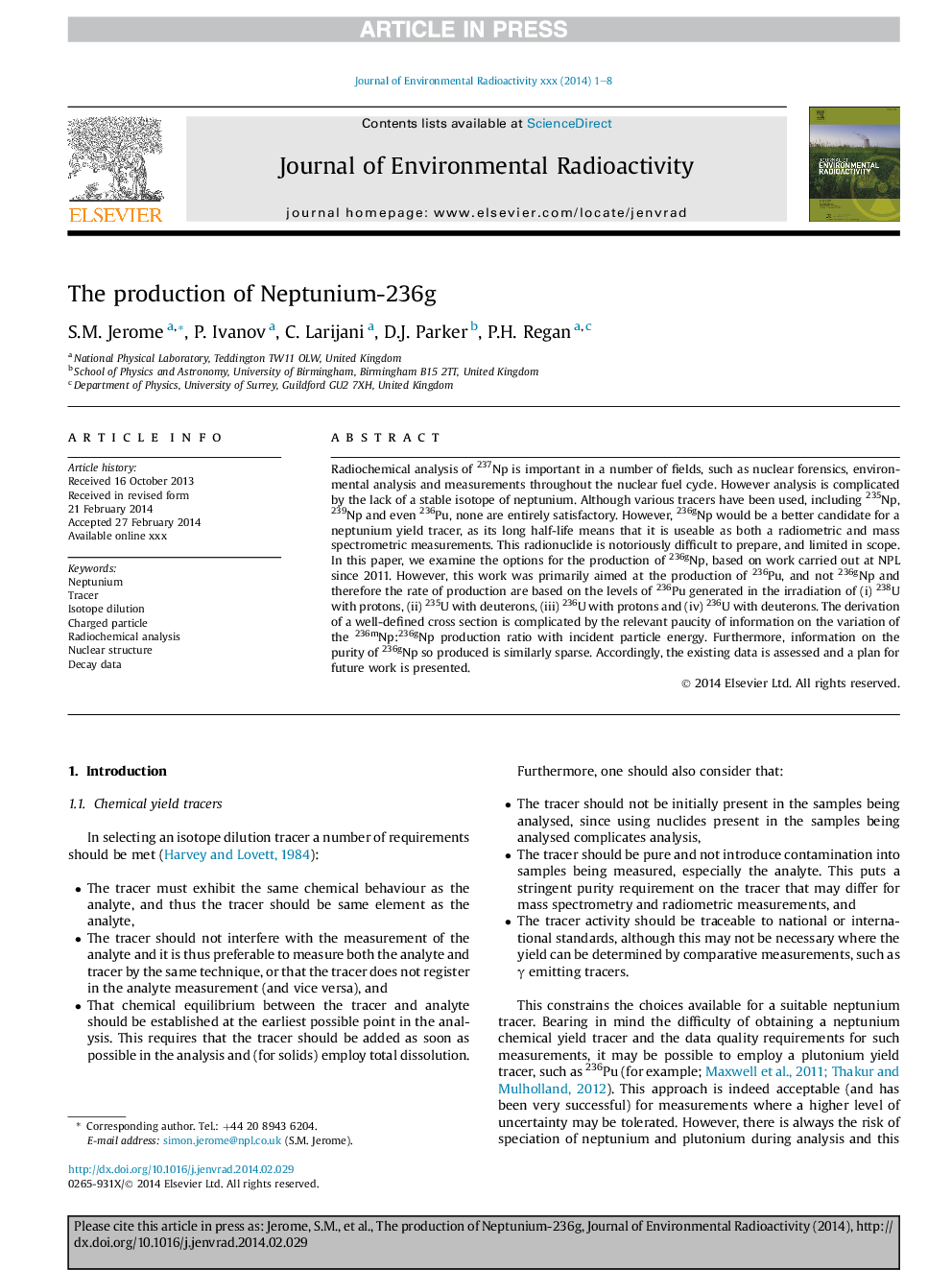| Article ID | Journal | Published Year | Pages | File Type |
|---|---|---|---|---|
| 8082838 | Journal of Environmental Radioactivity | 2014 | 8 Pages |
Abstract
Radiochemical analysis of 237Np is important in a number of fields, such as nuclear forensics, environmental analysis and measurements throughout the nuclear fuel cycle. However analysis is complicated by the lack of a stable isotope of neptunium. Although various tracers have been used, including 235Np, 239Np and even 236Pu, none are entirely satisfactory. However, 236gNp would be a better candidate for a neptunium yield tracer, as its long half-life means that it is useable as both a radiometric and mass spectrometric measurements. This radionuclide is notoriously difficult to prepare, and limited in scope. In this paper, we examine the options for the production of 236gNp, based on work carried out at NPL since 2011. However, this work was primarily aimed at the production of 236Pu, and not 236gNp and therefore the rate of production are based on the levels of 236Pu generated in the irradiation of (i) 238U with protons, (ii) 235U with deuterons, (iii) 236U with protons and (iv) 236U with deuterons. The derivation of a well-defined cross section is complicated by the relevant paucity of information on the variation of the 236mNp:236gNp production ratio with incident particle energy. Furthermore, information on the purity of 236gNp so produced is similarly sparse. Accordingly, the existing data is assessed and a plan for future work is presented.
Keywords
Related Topics
Physical Sciences and Engineering
Energy
Nuclear Energy and Engineering
Authors
S.M. Jerome, P. Ivanov, C. Larijani, D.J. Parker, P.H. Regan,
